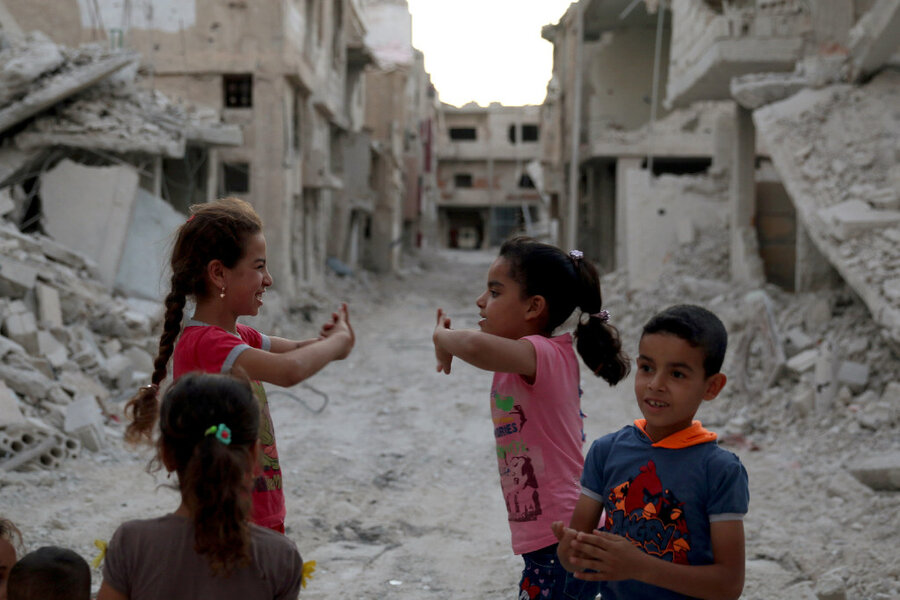A toehold for peace in Syria
Loading...
After six years of war, nearly 100,000 civilian casualties, and rising foreign intervention, Syria has a toehold on peace. A truce in southwest Syria, brokered on July 7 by Russia and the United States, has so far held up. While the silencing of guns may fail, it at least shows growing war fatigue and provides some hope for a reshaping of Syria by peaceful means.
Much of the fighting in Syria, which began with pro-democracy protests in 2011, is now driven by foreign powers. The US, for example, has tapped local forces to defeat Islamic State in the city of Raqqa. Iran seeks a land corridor to the Mediterranean Sea. Turkey wants to block a Kurdish state. But it is Russia, which has found it difficult to balance its many interests in the Middle East, that is driving this local truce between the forces of the Syrian regime and its opponents.
Russia has discovered in Syria what the US had to learn in Iraq: Local allies are hardly stable partners if their source of legitimacy is mainly guns and not an inclusive and tolerant government. A solution for Syria’s long war lies ultimately in a reframing of the bonds of community, even if that requires a partition of the country along religious or ethnic lines.
The cease-fire, as well as ongoing talks in Geneva between the regime and the Syrian opposition, allows a small respite for Syrians to consider an alternative to armed conflict. It may also allow for civilians in the area to receive humanitarian aid.
Outside powers, such as Iran and Turkey, must recognize that military means alone cannot be the only way to seek an advantage or to defend one’s positions. Russia may have overplayed its hand in Syria and could be looking to cut a diplomatic deal. The truce might be a cornerstone for peace.







